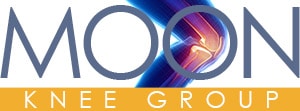Return to Sport After ACL Reconstruction Surgery
Return to Sport After ACL Reconstruction Surgery
If you chose to have anterior cruciate ligament reconstruction (ACLR) surgery, you want to return to a sport or activity with cutting and pivoting. Nearly all ACLR patients share this objective, according to MOON Knee Group research.
And if you’re reading here, you want to know how the research findings can help you get back to your activity:
- What are reasonable expectations?
- What are the recommendations to achieve the highest possible return-to-play performance?
- When can you return to practice and play?
- How can you reduce your retear risk to safely return to play?
MOON Knee ACL Return-to-Sport Research Findings
These MOON Knee Group research findings can help you reduce your retear risk and improve your on-field performance. Here’s what we know followed by recommendations in the next section:
- About 70 percent of football and soccer players return to play following ACL reconstruction surgery (see Brophy AJSM Soccer and McCullogh AJSM Football).
- A significant percentage of these athletes self-report lower performance than preinjury.
- The sample size for return to play in other sports is too small to report percentages.
- Return-to-sport training of as few as ten sessions increases the percentage of those who return to their sport. It also improves self-reported sports function scores. Both findings are from a 2019 study (Capin OJSM 2019).
What is universally clear: all athletes do NOT get back either their preinjury activity level or to a specific sport following ACL reconstruction.
About Your Retear Risk
- Every reconstructed ACL has a retear risk. You can calculate yours here.
- Your uninjured leg has a predictable tear risk similar to the retear risk of your reconstructed knee. You can calculate your contralateral risk as well.
- While females have a higher initial ACL tear risk, they have the same retear risk as males.
- Controlled studies show a proven way to lower your retear risk is to complete a structured cutting and landing program to reduce the abnormal forces that cause reinjury.
There Is No Validated Return-to-Play Criteria
- None of the many return-to-sport tests or evaluation approaches has been proven to be statistically valid.
- Evaluation by a medical professional with return-to-sport experience still has a high value in guiding your decision on when to return. They can help you avoid returning too soon or give you confidence when you do.
- Everyone is different. The further you get from surgery and the first three rehab phases, the less research can tell you and the more your differences matter. This reinforces the importance of testing and evaluation by a professional experienced with ACL return to sport.
What follows is how you can improve your chances your return-to-play capabilities.
Seven Ways to Improve Your Chances to Return to Play Safely and With High Performance
Combining MOON Knee research results with clinical experience, here are seven keys to a safe return to sport after ACL reconstruction. While it is a short list, it goes from immediately following your injury to your decision to return to practice and then play:
- Get your best results from surgery, particularly building strength before the operation and choosing the graft with the lowest retear risk.
- Build and maintain strength and functionality in both legs and your core. Everything works together in your lower body. Even with the best surgery and rehabilitation, you can retear your reconstructed ACL. You also have an equal or higher risk to tear your uninjured ACL.
- Fully complete your ACL rehabilitation program.
- Follow rehabilitation with a return-to-sport injury prevention program specific to your activity. These include FIFA 11+ and STOP.
- Learn the proper landing and cutting techniques. Train to reduce inward knee bend, especially if you are knock-kneed.
- Don’t return too soon. There’s a difference between your knee feeling good and your ACL being fully healed and your leg strong and functional. Beware of promises of breakthroughs or early return to play. The inside of your knee gets little blood flow and takes time to heal.
- Get a professional evaluation of your readiness. You have final say on when you return. You also might have an emotional or financial motivation. Making this decision without a professional evaluation risks a retear and another nine to 12 months of rehabilitation.
Land and Decelerate the Right Way
Even without contact, you can put enough force on your ACLs to tear them. You can reduce your tear or retear risk by training to land and change direction with lower force. See the complete landing and deceleration discussion with images and video at How to Decelerate and Land to Prevent ACL Injuries.
When to Return to Practice and Play?
Best practice on when to safely return to play is evolving. Which criteria are best is hotly debated. And no set of tests has been validated through research (see Best Practices below).
So how can you make your decision? Work with your sports professional team of physicians, physical therapists and athletic trainers. Get evaluated and listen to their recommendations, even if it means delaying your return.
It is reasonable to expect that you can return to your sport or activity. It is also reasonable to expect a lower level of performance. But everyone is different.
Guidance that you are ready to return to play is a recommendation, not a guarantee.
Best Practices for Return-to-Sport Evaluations

A 2017 study co-authored by MOON Knee Group contributor Dr. Eric McCarty, chief of sports medicine and head team physician at the Sports Medicine and Performance Center at Colorado University in Boulder, came to this conclusion:
Although there are many recent publications indicating criteria for return to sport following ACL reconstruction, there is no predictive validity of any of the studies at the present time [50]. Therefore, based on the present literature and clinical experiences of the authors, we recommend the following:
A battery of varying tests examining different psychometric properties (state of mind influences return to play success)
A battery of tests based on the measurement of impairment in addition to the examination of strength and power
Specific quantitative and qualitative criteria for assessment of performance and function
Examination via proactive and reactive activity to simulate a real-case sports activity scenario
A fatigue factor in the terminal phases of clinic testing (fatigue is a risk factor for ACL tears and retears)
Psychological testing to evaluate for potential kinesiophobia (fear of movement)
Patient-reported outcomes
The Further You Progress, the Less Research Can Tell You
The further you progress in your return-to-sport program, the less ACL research can tell you about your specific choices.
Why? Because everyone is different. People with reconstructed ACLs:
- Play different positions in different sports at different competitive levels.
- Are different ages with different bodies in different physical conditions.
- Have different injuries.
- Made different graft choices.
- Vary in their dedication to their return-to-sport program.
- May not have the time or resources to rehabilitate fully or with knowledgeable guidance.
These differences make it challenging to apply one set of return-to-play guidelines to everyone. You could beat the averages and successfully return to your sport in less than nine months. You could struggle to return in two years—or at all.
The further you get from surgery and the first three rehab phases, the more these differences matter. Which is why effective return-to-sport programs are tailored to each individual.
Was This Content Helpful?
Share via:

